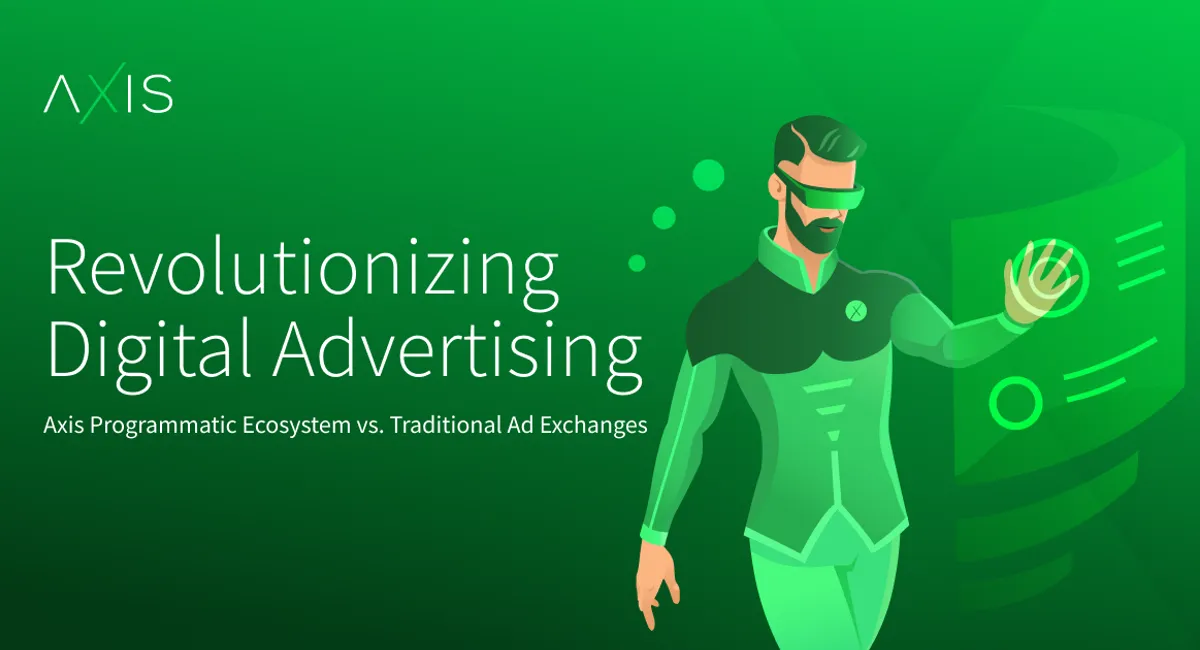- Homepage
- /
- Wiki
- /
- Revolutionizing Digital Advertising: Axis Programmatic Ecosystem vs. Traditional Ad Exchanges
Revolutionizing Digital Advertising: Axis Programmatic Ecosystem vs. Traditional Ad Exchanges

While using ad exchanges remains a popular choice in digital advertising, there are innovative solutions like the Axis programmatic middleware aimed to increase the effectiveness of the general use of ad exchanges, significantly improving the conventional approach.
Such kinds of solutions don't serve as a direct alternative to traditional ad exchanges; rather, they complement them most effectively, operating in tandem with ad exchanges and enhancing the efficiency and scalability of the usual ad exchange model.
However, let’s start from the very beginning.
What is an ad exchange?
An ad exchange is a platform that organizes the trading of advertising inventory in the digital space.
In essence, an ad exchange connects suppliers looking to monetize their digital properties with advertisers. It operates within the realm of real-time bidding on a programmatic basis, meaning that the buying and selling of ad inventory are done automatically, without the need for human intervention.
How does an ad exchange work?
An ad exchange acts as a trading platform between publishers looking to sell their inventory and advertisers looking for placements to show their ads.
What does the process look like from the publisher's side?
Direct publisher inventory (whether it's mobile apps or websites) is being connected to a technology called a supply-side platform (SSP). To enable SSPs to sell advertising inventory through oRTB, publishers establish connections with an advertising exchange, or more commonly, multiple ones. However, they can also function on a direct sales model.
And what about the advertisers?
To access the needed inventory, advertisers use demand-side platforms (DSPs) to input their campaign needs, from targeting parameters to bid prices. The DSPs, in their turn, also plug into the ad exchanges.
Most ad exchanges sell inventory through open real-time bidding, which means that an ad impression is bid on by numerous advertisers, with the spot going to the highest bidder. While this happens in real time, it feels instantaneous to the viewer. Essentially, while the ad creative is loading on the website you are viewing or in your open mobile application, the auction takes place.
What is the Axis?
Axis acts as a programmatic middleware, facilitating smooth connections between suppliers and advertisers to streamline partnership acquisition and trading processes, thereby boosting profitability. As a kind of connector, Axis offers you the opportunity to expand your partner network with its onboarded clients. Importantly, Axis does not insert its node into the selling chain, ensuring there are no additional hops from Axis's side. When collaborating with Axis's clients, you are essentially working with them directly on a technical level.
https://www.linkedin.com/pulse/revolutionizing-digital-advertising-axis-programmatic/
